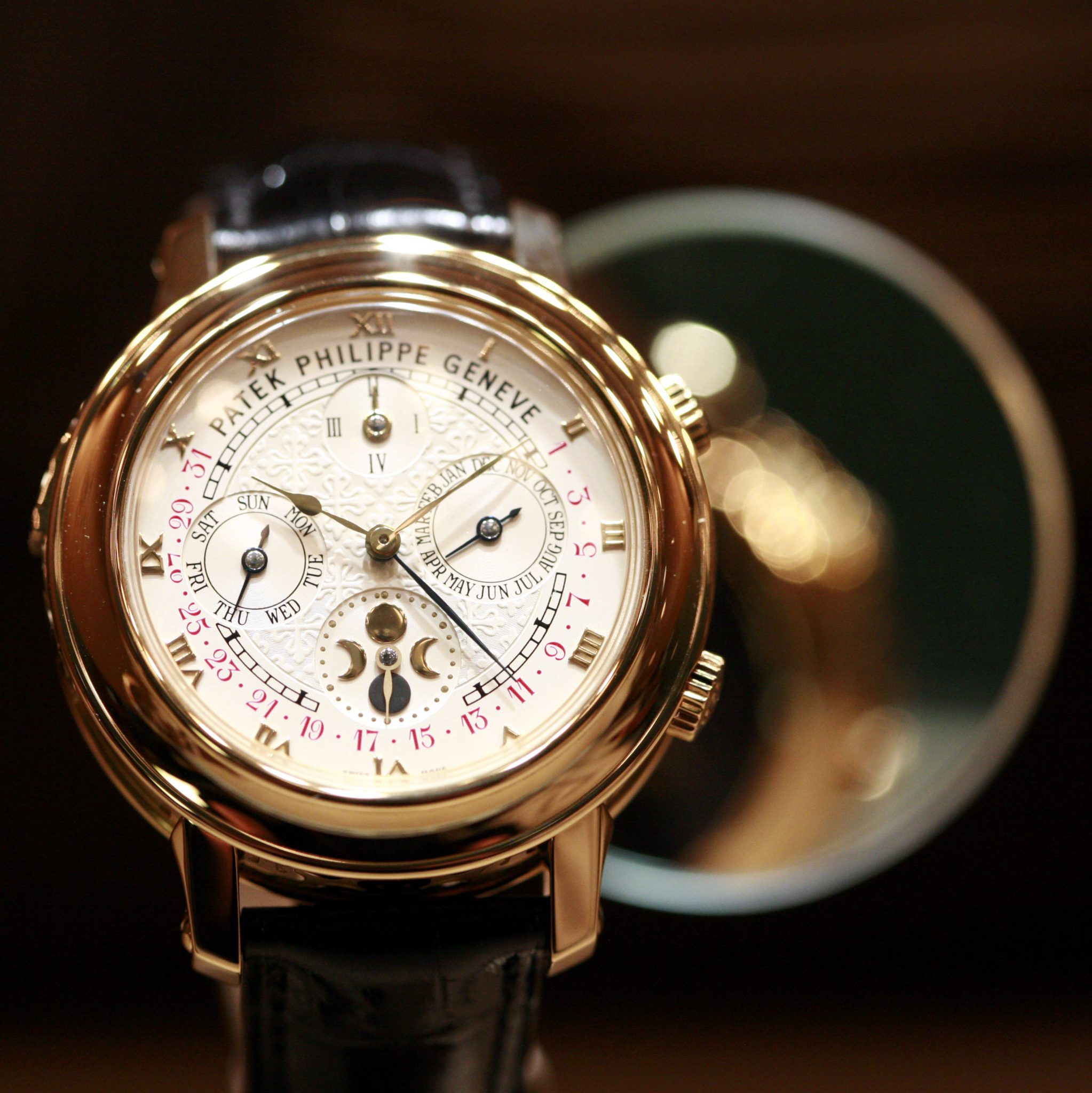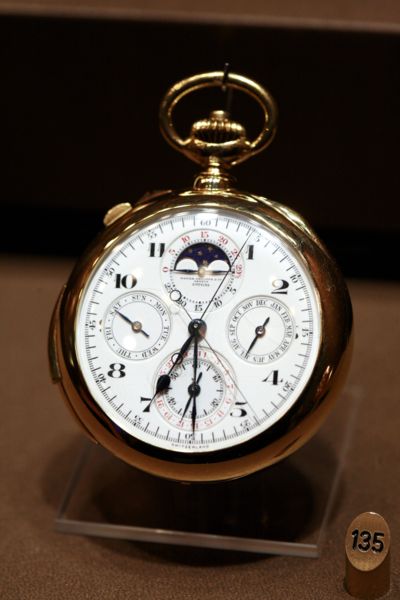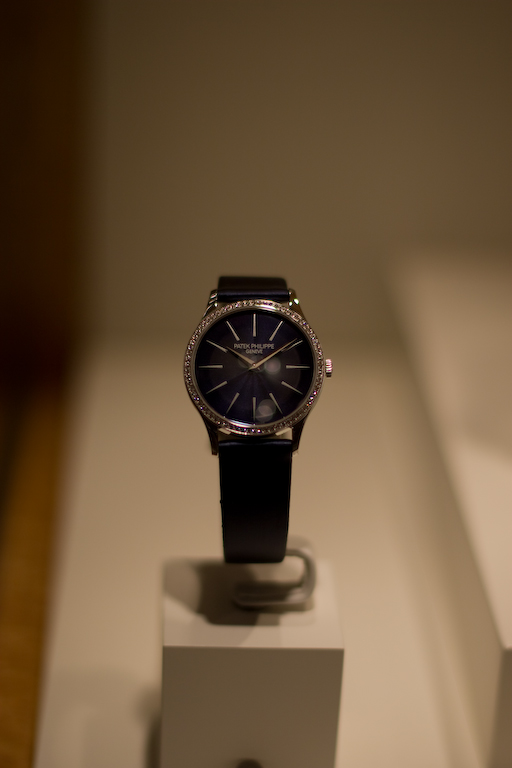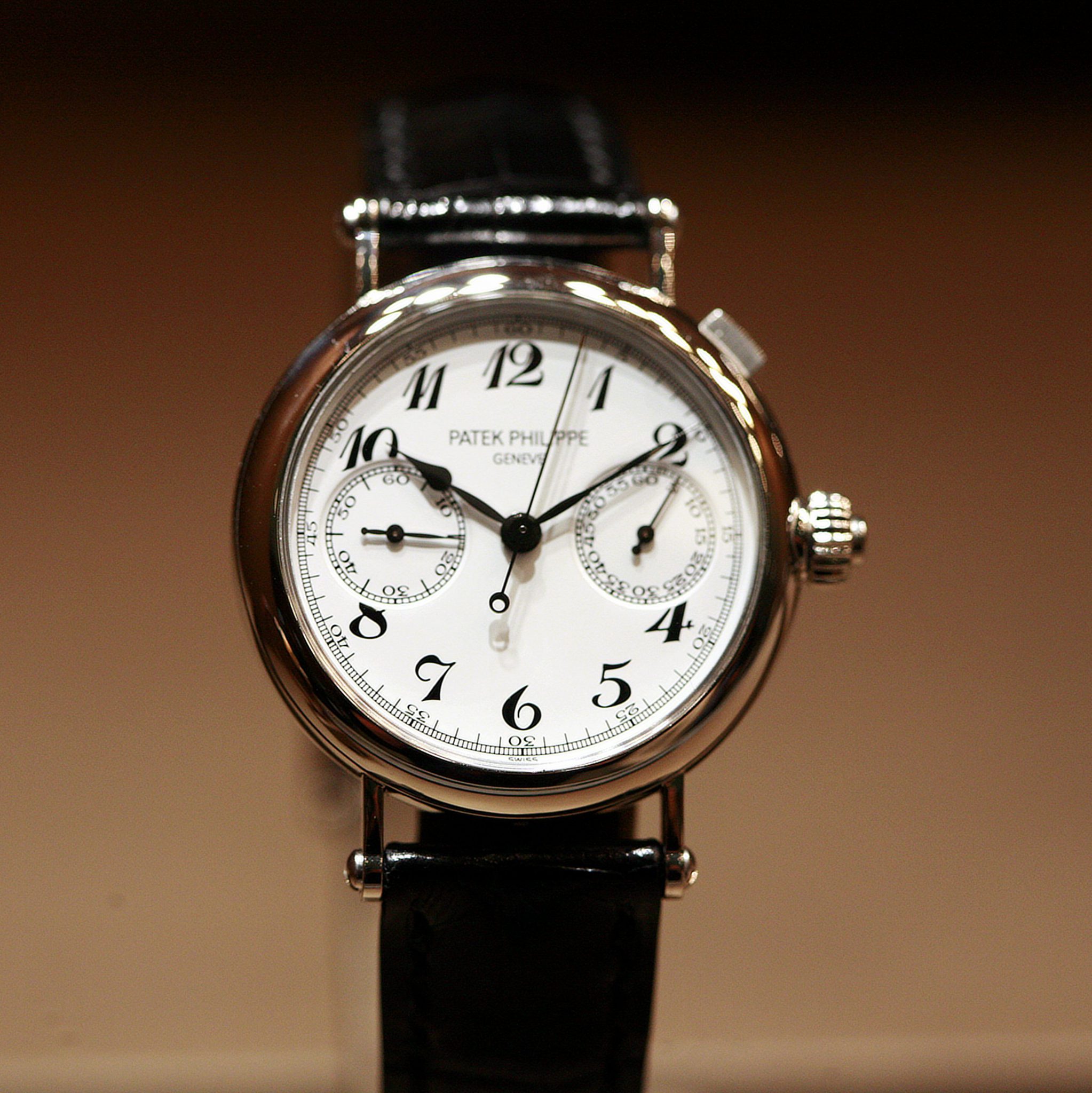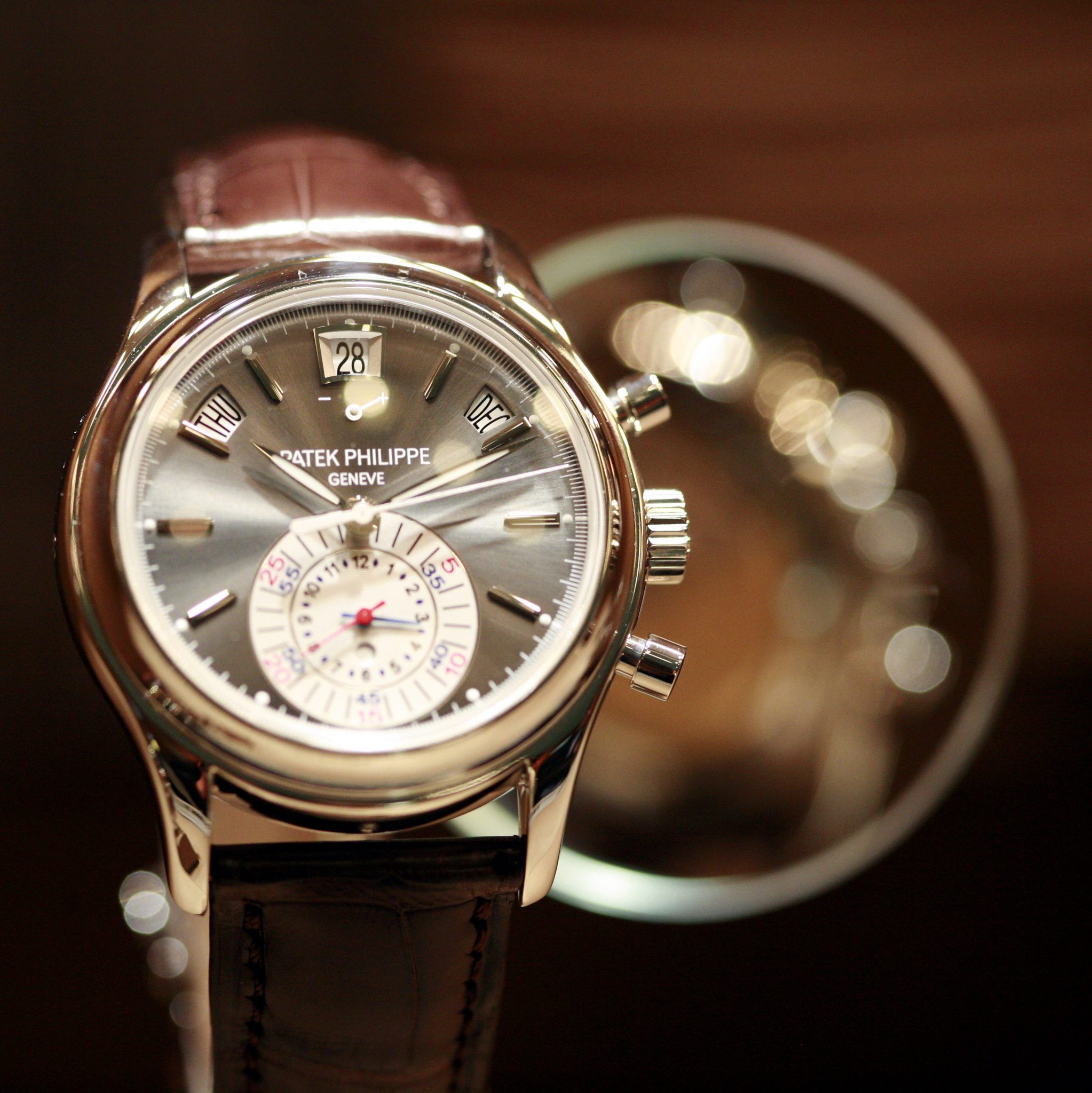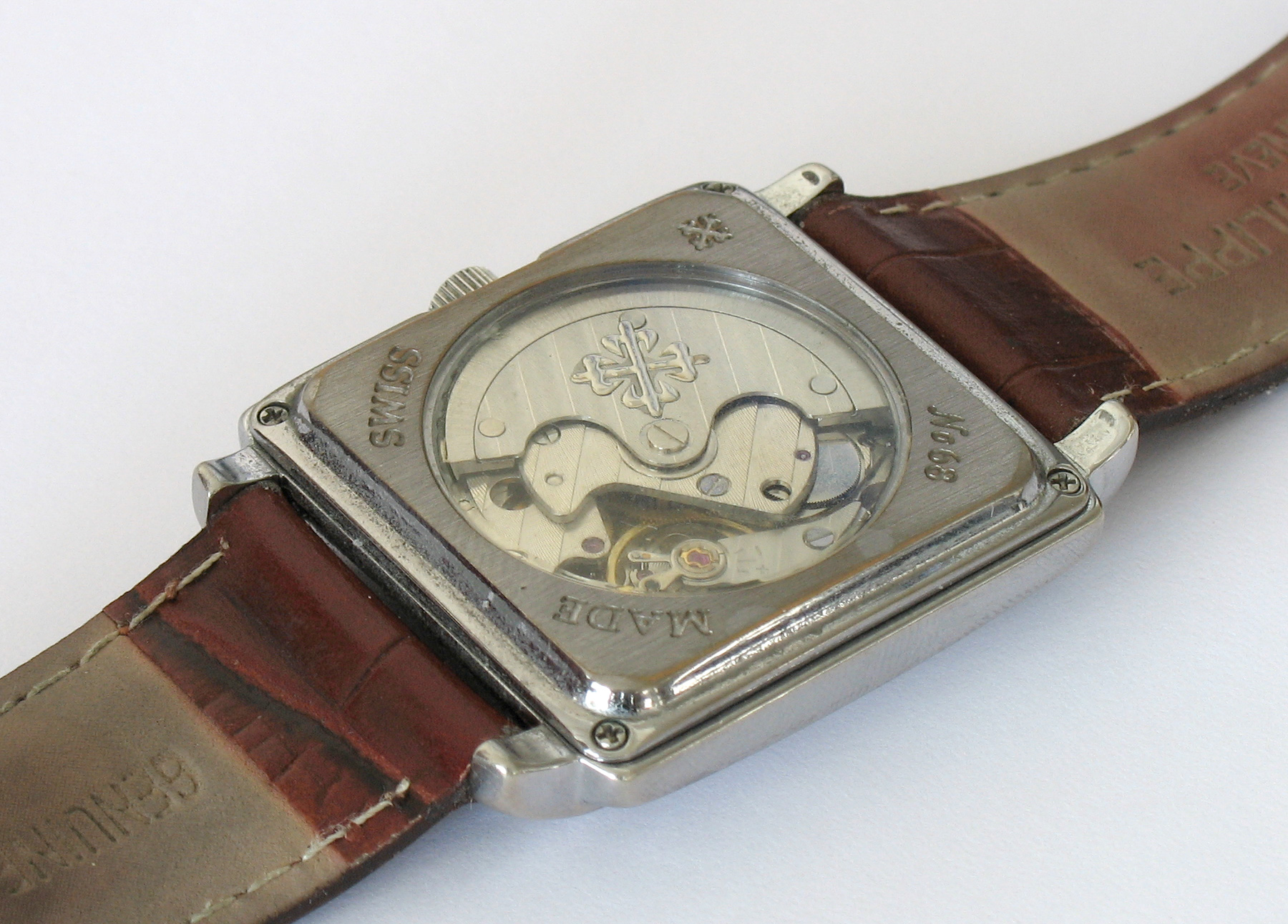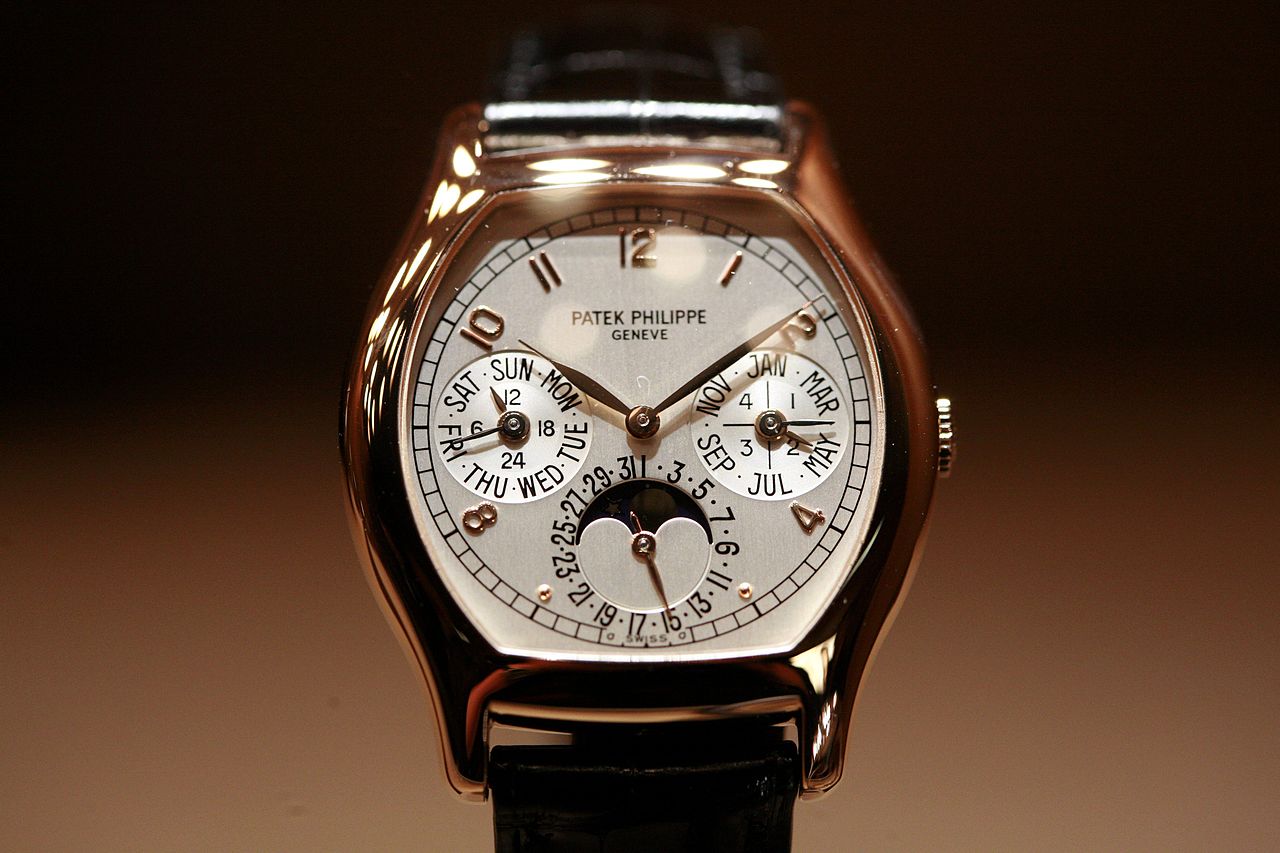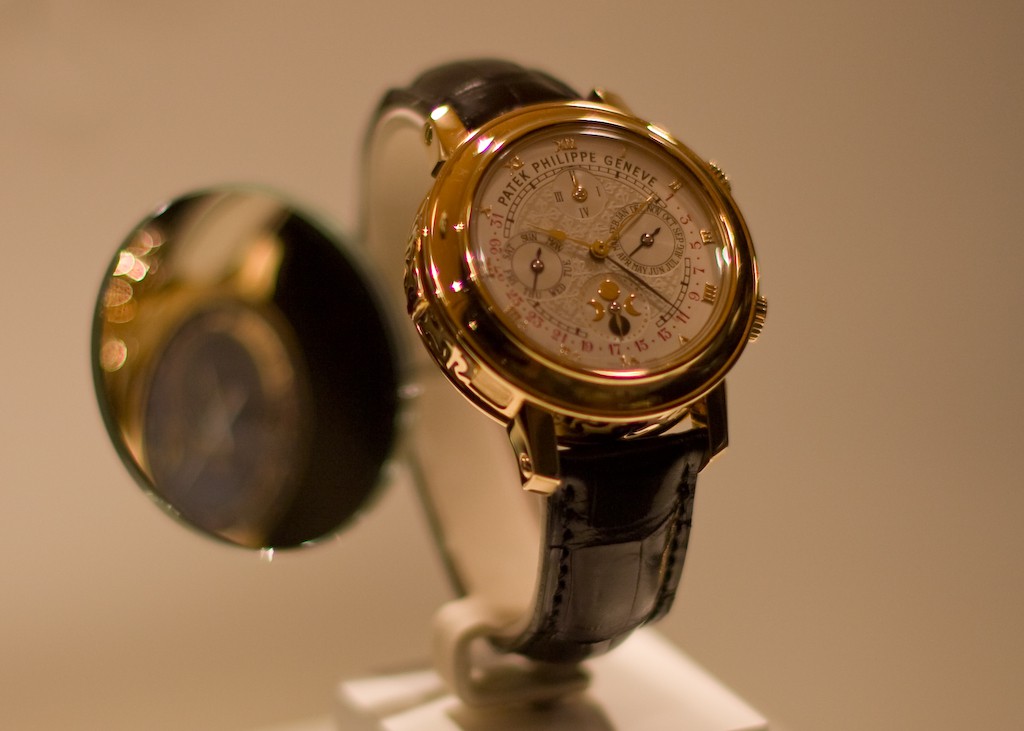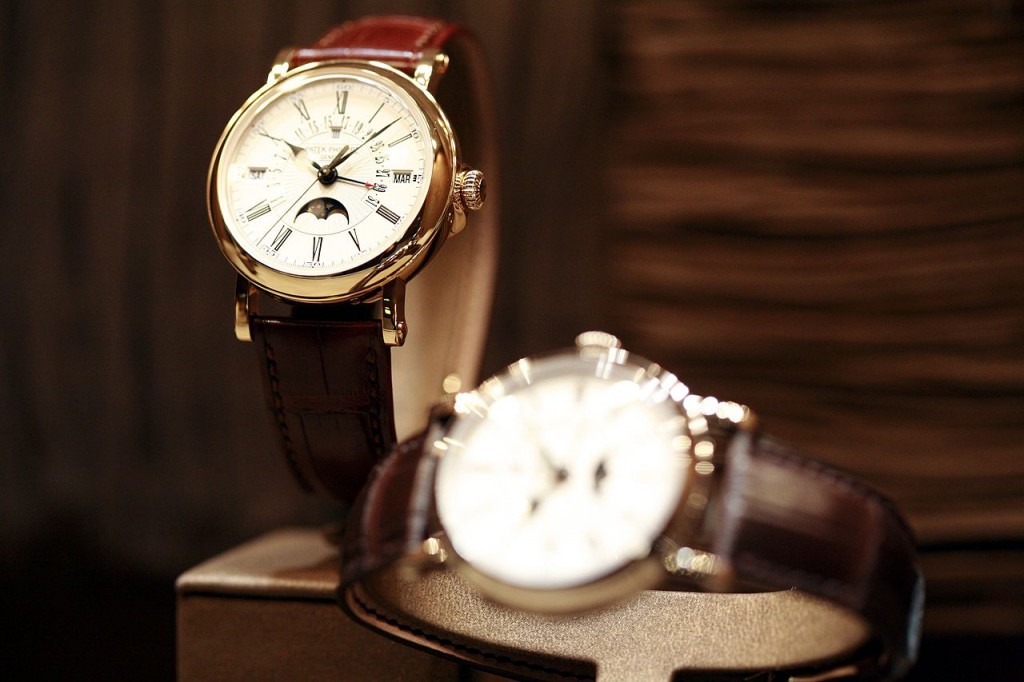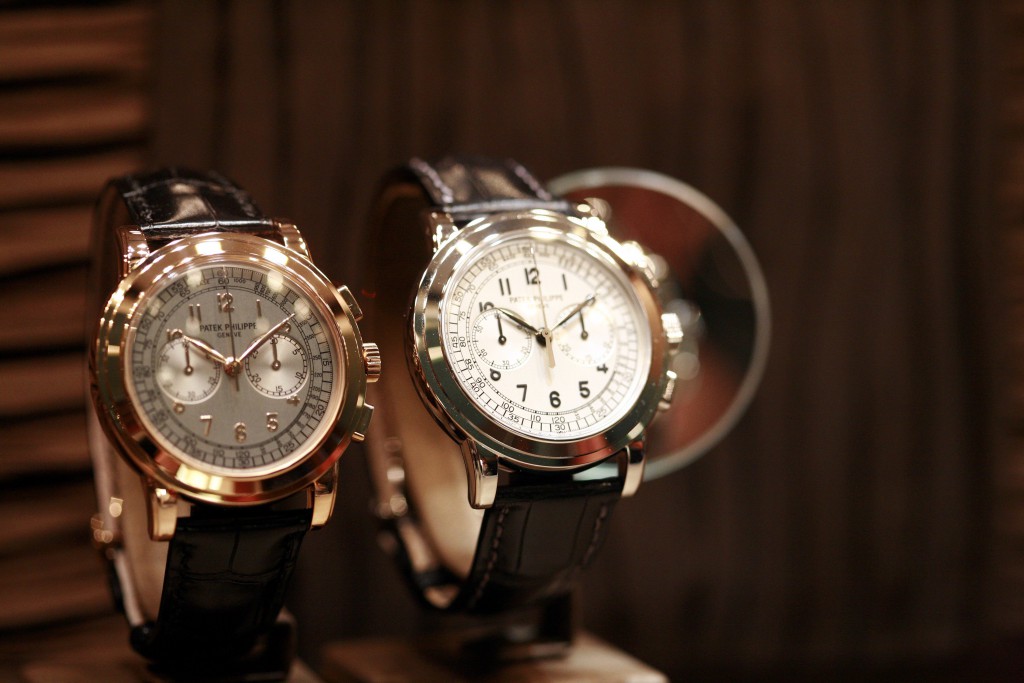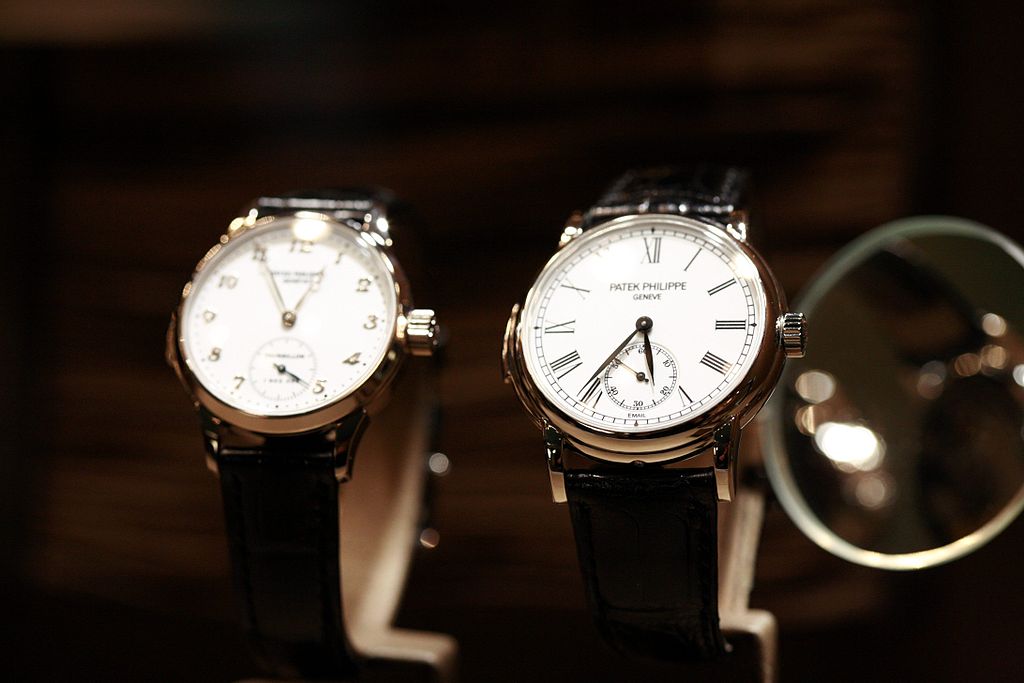Patek Philippe: Brand Identity, Reputation and Ranking
Swiss Luxury Watch Brands Reviews Menu
Shop Patek Philippe Watches:
Patek Philippe – A Member Of The Holy Trinity
History, Mission, Manufacture, Movements, Reputation, Ranking & Pricing
Patek Philippe Brand Review By Alexander – Founder and Owner of swissdiverswatches.com
A Review of Patek Philippe’s history
In 1839, Antoine Norbert de Patek, and Francois Czapek, established Patek, Czapek & Cie. which was the forerunner of Patek Philippe. They established the watch manufacturer in Geneva, Switzerland, where it’s located even today.
Patek, Czapek & Cie became Patek Philippe & Co. in 1851. Patek Philippe is named after Antoine Norbert de Patek and Jean Adrien Philippe.
Patek Philippe is one of the very few independent family owned Swiss watchmakers left in existence today.
In 1839, the Polishman Antoine Norbert de Patek, and the Czech Francois Czapek, established Patek, Czapek & Cie. which was the forerunner of Patek Philippe, in Geneva, Switzerland.
In 1839, the legendary Swiss watch manufacturer sold their first pocket watches.
In 1839, Patek sold a royal pendant watch to the Russian Princess Zubów.
In 1844, Antoine Norbert de Patek attended a watch exhibition in Paris – the Exposition Nationale des Produits de l’Industrie. Most likely, that’s where he first met Jean Adrien Philippe – Patek’s future business partner that would lend his family name to the brand.
In 1845, Antoine Norbert de Patek invited Jean Adrien Philippe to Geneva, Switzerland, in order to convince him to jointly manufacture watches and start a new watchmaking company.
The same year, in 1845, the company produced its first keyless pocket watch.
In 1850, the Grand Duchess Catherine of Russia, purchased a watch from Patek.
In 1851, the company was renamed Patek Philippe & Cie.
In 1851, Patek Philippe displayed what was then the smallest pocket watch ever made. The watch was displayed at the Great Exhibition in London.
Between 1854 and 1858, the brand expanded its market presence in Europe, Russia and the United States.
In 1863, the luxury watch brand released its first pocket watch equipped with a tourbillon.
In 1865, the Queen of Portugal, Maria Pia, purchased her first Royal Watch from Patek Philippe.
In 1868, the watchmaker supposedly produced the world’s very first Swiss wristwatch. It was sold to Countess Koscewicz of Hungary. However, Breguet, a competitor, maintains they sold their very first wristwatch to the Queen of Naples – Caroline Murat, in 1812.
In 1877, Patek Philippe’s founder, Antoine Norbert de Patek, passed away.
In 1880, the luxury watch manufacturer won the first prize with a pocket chronometer, at the Astronomical Observatory of Geneva, in Switzerland.
In 1881, the company was awarded a patent for a precision regulator system.
In 1884, the luxury brand was awarded additional prizes at the Astronomical Observatory of Geneva, in Switzerland.
In 1886, Patek Philippe was granted the Geneva Seal. This is a certification which ensures and guarantees that the quality and origins of the movements are indeed from Geneva. Patek Philippe carried this Geneva Seal on its movements until 2009, when Patek Philippe introduced its own seal.
In 1889, the watch producer was awarded a patent for their perpetual calendar mechanism which was used in pocket watches.
In 1895, Patek Philippe created Royal Watches for Tzar Nicolas II of Russia.
Between 1895 and 1897, the company created pocket watches with highly complicated movements.
Below: An example of a Patek Philippe pocket watch:
Between 1900 and 1939, Patek Philippe won more than 700 timekeeping prizes! Between 1900 and 1951, Patek Philippe won more than 300 first prizes! Patek Philippe won its awards at the Astronomical Observatory of Geneva in Switzerland.
In 1901, the watchmaker became a limited liability company. The company was called Ancienne Manufacture d´Horlogerie Patek Philippe & Co.
In 1902, the luxury watch producer was granted a patent for its very first double chronograph watch.
In 1904, the company was awarded a patent for an ultra-thin watch movement.
In 1907, Patek Philippe was awarded several chronometer prizes at the Kew-Teddington Observatory, in London, United Kingdom.
The year of 1910, was a special year in the world of watchmaking. Patek Philippe released its world famous pocket watch with several complications, referred to as a “supercomplication”. The pocket watch is called “Duke of Regla”.
In 1923, Patek Philippe released its first split-seconds chronograph wristwatch.
In 1924, the brand released its first minute-repeating wristwatch.
In 1925, the watch manufacturer presented to the world, the first wristwatch with a perpetual calendar.
In 1932, Patek Philippe was purchased by two investors, and brothers, called Jean and Charles Stern.
In 1932, the luxury brand created its first Calatrava model.
In 1939, the company won the first prize for its chronometer watch with a tourbillon. Patek Philippe won the prize at Kew-Teddington Observatory, in London, United Kingdom.
In 1941, the luxury brand presented to the world the very first wristwatch with a perpetual calendar and a chronograph.
In 1944, Patek Philippe was awarded several first prizes for precision, at the Astronomical Observatory of Geneva, Switzerland.
In 1953, the legendary watch manufacturer released its first self-winding/automatic wristwatch. Patek Philippe was awarded patents for those movements.
In 1958, Jean Pfister, President of Patek Philippe, was succeeded by Henri Stern.
In 1968, the company released the Golden Elipse Collection.
In 1976, Patek Philippe released the famous Patek Philippe Nautilus Collection.
In 1977, Philippe Stern became the Managing Director of Patek Philippe.
In 1989, the luxury watch manufacturer from Geneva, released the then most complicated wristwatch in the world.
In 1993, Philippe Stern became the President of Patek Philippe.
In 1993, the luxury brand launched the Gondolo Collection.
In 1997, Patek Philippe launched the Patek Philippe Aquanaut Collection.
In 2000, the watch producer released a super complicated movement called Star Caliber 2000.
In 2001, the Patek Philippe Museum Geneva was opened to the public.
In 2005, the company released the thinnest split-seconds chronograph movement in the world.
In 2009, Patek Philippe’s official name became Patek Philippe SA Geneve.
In 2009, Patek Philippe released the Patek Philippe Seal, which is a quality benchmark for Patek Philippe’s mechanical watches.
Top Page/Shopping/Brand Review Menu
A Review of Patek Philippe’s mission
Patek Philippe is an independent family owned Swiss watchmaker, dedicated and committed to the vision of producing the finest luxury timepieces in the world, with an unmatched workmanship and quality.
This extreme luxury wristwatch brand, is defined by words such as fine handicraft, workmanship and quality.
The company’s watches are manufactured by hand, by master artisans and watchmakers, on an extremely limited scale. Almost every single Patek Philippe watch, if not every single one, is a collectible timepiece.
Patek Philippe timepieces are meant for the connoisseurs and the collectors – the brand is not meant for mass production and mass consumption,
Patek Philippe timepieces are very rare even in comparison to other prestigious Swiss luxury watchmakers.
Top Page/Shopping/Brand Review Menu
A Review of Patek Philippe’s manufacture
Patek Philippe is one of very few independent and family owned Swiss luxury watch manufacturers left, and this independence gives Patek Philippe the freedom to set their own standards and fully use their creative potential.
Between 1900 and 1939, Patek Philippe won more than 700 timekeeping prizes! Between 1900 and 1951, Patek Philippe won more than 300 first prizes! Patek Philippe won its awards at the Astronomical Observatory of Geneva in Switzerland.
Patek Philippe’s history is a testament to the technical virtuosity and excellence of the Geneva based Swiss watch manufacturer.
In 2009, Patek Philippe released the Patek Philippe Seal, which is a quality benchmark for Patek Philippe’s mechanical watches.
All movements utilised by Patek Philippe are in-house made. In the past, Jaeger LeCoultre supplied Patek Philippe with many of their movements.
Patek Philippe invents, conceives, develops and manufactures their in-house movements according to their own criteria.
The luxury watch manufacturer, applies rigorous and demanding standards to the developing and manufacturing process.
Patek Philippe is an innovative brand which has filed over 80 patents.
The brand is a master of complications (astronomical, striking and timing complications) and Grande Complications – a combination of several complications.
Patek Philippe’s watches are very rare and handmade – the most basic timepieces take 9 months to manufacture! Each and every Patek Philippe timepiece is a unique and precious creation.
The luxury company manufactures each and every timepiece by hand for connoisseurs. Their watches aren’t mean for mass production and mass consumption.
Their movements are profusely decorated. The decorations rarely have any practical appliance – the decorations are made to turn their movements into a piece of art.
Patek Philippe doesn’t follow the whims and fashions of the luxury watch market. The aesthetics of the brand’s design is usually timeless – their watches have an aristocratic and elegant feel to them.
Top Page/Shopping/Brand Review Menu
A Review of Patek Philippe’s movements
Patek Philippe manufactures their own movements, and relies entirely on their movements, which makes the brand a member of an exclusive club of Swiss watchmakers.
Patek Philippe Aquanaut:
- Patek Philippe in-house automatic movement 324 S C, with 29 jewels, 28,800 vph, and a 45 hour power reserve.
- Patek Philippe in-house automatic movement 324 S C FUS, with 29 jewels, 28,800 vph, and a 45 hour power reserve.
Patek Philippe Nautilus:
- Patek Philippe in-house automatic movement 324 S C, with 29 jewels, 28,800 vph, and a 45 hour power reserve.
- Patek Philippe in-house automatic movement CH 28-520 C, with 35 jewels, 28,800 vph, and a 55 hour power reserve.
- Patek Philippe in-house automatic movement 324 S QA LU 24H, with 34 jewels, 28,800 vph, and 45 hour power reserve.
Top Page/Shopping/Brand Review Menu
A Review of Patek Philippe’s reputation
Most likely, Patek Philippe is the nr 1 luxury brand in the world in terms of prestige, luxury, and price range. Indeed their prices are very high – even by luxury watch standards!
Patek Philippe is a member of “The Holy Trinity” of luxury watch brands – the three most prestigious luxury wristwatch brands in the world!
Believe it or not, but it takes Patek Philippe 9 months to just manufacture the most basic timepieces. All their watches are handmade by master artisans and watchmakers.
Patek Philippe has an old history – it started back in 1839 in Geneva, Switzerland.
Patek Philippe may not be a financial giant such as Rolex, and may not be as famous and well known as Rolex, Omega and Breitling, but among those who undoubtedly know watches, Patek Philippe is the ultimate luxury watch manufacturer in the world.
Indeed, in the hierarchy of the world’s luxury watch brands, Patek Philippe ranks higher than Jaeger LeCoultre, Breguet, Blancpain, Rolex, A. Lange & Söhne (a German luxury brand), Omega, Zenith, IWC, Breitling, Panerai – the list is almost endless!
It’s debatable, whether it’s Patek Philippe, Audemars Piguet or Vacheron Constantin (all members of the “Holy Trinity”) that should be ranked as “the nr 1 brand”. However it is no doubt a fact, that Patek Philippe is consistently ranked as “nr 1”. This however, is not my personal ranking or opinion.
But many people do ask (and rightly so – considering the prices!): “What’s so special about Patek Philippe?” There are many reasons:
- It’s one of very few independent Swiss luxury watch brands left. On top of that, Patek Philippe is family owned.
- Patek Philippe is a master of complications and Grande Complications.
- All movements are in-house made, which makes this brand a member of an exclusive club of Swiss watchmakers.
- Every aspect of the production, is being done in-house by Patek Philippe.
- Their watches are entirely handmade.
- Their most basic watches take 9 months to make! I promise it isn’t a joke.
- Patek Philippe frequenlty uses precious materials.
- Their movements are handmade and profusely decorated – with the brand’s logo, watch jewels, images, patterns and precious materials.
- Besides Rolex, Patek Philippe has the best resale value on the market.
- Patek Philippe is a member of “The Holy Trinity” – the three most prestigious luxury wristwatch brands in the world. The other two luxury brands are Audemars Piguet and Vacheron Constantin.
Patek Philippe is expensive because:
- It takes a considerable amount of time to manufacture their watches. This would include manufacturing expenses and salaries to employees.
- There is a large demand for a very small volume of Patek Philippe watches manufactured and sold. This follows the laws of economics – supply and demand.
- A small volume of production requires that premium prices are charged per each manufactured unit in order for the manufacturer to be profitable. Handmade watches are not an economy of scale.
- Often precious metals and materials are used.
- The finest quality components are used for the movements.
- Since more things can go wrong with automatic and mechanical movements than quartz movements, the in-warranty service needs to be factored into the price of a premium watch.
- Patek Philippe is not merely a watch – it’s a piece of art – in the most literal sense! It’s not merely a time measuring instrument. Patek Philippe is first and foremost a handmade luxury experience offering you a piece of exquisite art on your wrist.
The price, the prestige and the luxury of Patek Philippe (and Audemars Piguet and Vacheron Constantin) do not imply that their movements are necessarily “better” – that is more accurate, reliable, durable, servicable or robust.
A $50,000 Patek Philippe is not 10 times more accurate than say a $5,000 Breitling. A $50,000 Patek Philippe is not 5 times more accurate than a $10,000 Rolex. A $50,000 Patek Philippe is not 100 times more accurate than say a $500 Tissot. The price range has nothing to do with the movement’s accuracy.
Even a $200 Tissot equipped with a quartz/battery movement, is more accurate than any Patek Philippe, Rolex, Audemars Piguet, Omega, IWC or Breitling out there. Of course, the accuracy involves just a few seconds – say 2-5 seconds a day. There is a difference but it’s still negligible for daily use.
Chances are that the automatic movements of Rolex, Omega and Breitling are equally accurate, well built and reliable – and most likely more robust and durable than Patek Philippe. The higher premium price reflects the art of handmade watches on a very limited scale. It’s ultimately a question of manufacturing costs, in-warranty service (more things can go wrong with mechanical/automatic movements) that is being factored into the premium price, large demand and small supply and precious materials.
Ultimately, you would purchase a Patek Philippe, because it’s a handmade luxury watch, and an exquisitely made piece of artisanship and art, which you can enjoy wearing on your wrist.
If you are collector, an enthusiast or if you have a slight streak of snobbery, Patek Philippe is the ultimate King of Luxury – it’s the luxury watch world’s equivalence to Rolls Royce – no expenses seem to be too great!
On a personal note: I deeply respect Patek Philippe, but I have to admit that Patek Philippe is not my favorite brand. Their movements are exquisitely decorated, the manufacturer is a master of complications and Grande Complications, but the watch design, the shape of the case, is in my opinion, rather colorless, insipid, undistinguished and quite frankly – boring. This is however my personal opinion. There are many people across the globe that would disagree with me on that!
As far as Patek Philippe Aquanaut and Patek Philippe Nautilus are concerned:
- These two collections shouldn’t be considered to be “full-bred” divers watches, but rather water resistant sports/dress watches. You would most likely be able to go swimming and snorkelling with them (a rather expensive pleasure!) but you shouldn’t go diving with them.
- The Aquanaut and Nautilus, are Patek Philippe’s sporty collections – they aren’t very representative of Patek Philippe. All other collections consist of dress watches with leather straps.
This brand has got it all: in-house made movements, complications, Grande Complications, handmade watches, excellent resale value, small volume – large demand, collectible timepieces, decorated movements, and Patek Philippe is an independent watchmaker!
This brand is a prime example of what collectors of luxury wristwatches are looking for! The downside of course is its price – Patek Philippe watches are extremely expensive! But Patek Philippe is no doubt, the King of Luxury!
What kind of person would most likely wear a Patek Philippe? Usually a very elegant and sophisticated person that appreciates an understated discreet elegance.
Patek Philippe watches are typically very elegant, thin, light, and discrete.
Top Page/Shopping/Brand Review Menu
A Review of Patek Philippe’s ranking
My ranking of Patek Philippe: 1st.
It’s debatable how you actually rank a brand, and a ranking is never objective, but the best way to turn a subjective ranking into an “objective” one is to rely on certain criteria. My ranking criteria of course are entirely subjective, and they aren’t set in stone.
I use 14 criteria in determining the ranking of a particular brand, such as (1) a long and respected history, (2) limited supply and large demand, (3) reputation/status/prestige, (4) whether the brand is independent or not, (5) pioneering spirit and innovations, (6) impact on watchmaking history and modern culture, (7) general in-house production, (8) whether the brand relies on in-house made movements or not, (9) whether or not the brand makes movement complications, (10) steel grade, (11) build quality, (12) price range, (13) good resale value, and (14) market presence.
Top Page/Shopping/Brand Review Menu
Shop Patek Philippe Watches
Prices for Patek Philippe Watches
- Patek Philippe Aquanaut can be found in the $15,000-$35,000 price range.
- Patek Philippe Nautilus can be found in the $20,000-$50,000 price range.
Patek Philippe Official Website
*Technically speaking, Patek Philippe’s Aquanaut and Nautilus Collections aren’t divers watches since they lack the traditional diver’s bezel. However these collections do fulfill the minimum water resistance requirements of divers watches, which is 330 feet/100 meters. The most common water resistance level of the Aquanaut and Nautilus collections is 393 feet/120 meters. The Aquanaut and Nautilus Collections should be classified as water resistant sports/dress watches. The Aquanaut and Nautilus Collections are suitable for swimming and snorkeling but not diving.
Please keep in mind that some of the Aquanaut and Nautilus watches have merely a 196 feet/60 meter water resistance which is well below the minimum requirement for divers watches – which is 330 feet/100 meters.
If water resistance is important to you, please make sure that you do not mix up the models with a 393 feet/120 meter water resistance, with those that have merely a 196 feet/60 meter water resistance.
If you have any comments or questions please drop them below and I’ll be happy to answer them!

